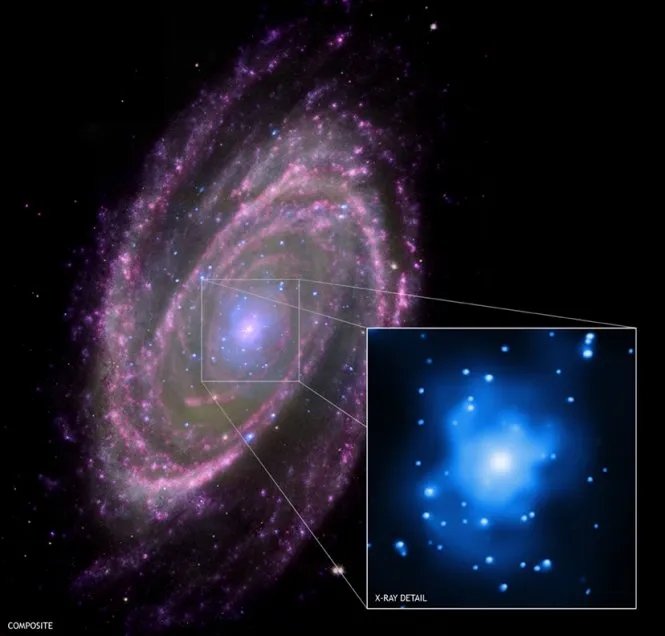Visible light has a very specific range of wavelengths at which it occurs. When the particles of which that light is comprised pass a given mass, then it behaves in various ways.
When the given mass is small, it passes without being influenced because the force of gravity is small.
As the given mass increases, it can produce optical illusions such as an Einstein Cross.

This is the effect of gravity causing the light's pathing to bend.
What we notice when we look at systems in the universe is that they can become smaller and smaller in volume the more massive they are. This is counter-intuitive, as we can see from looking at various bodies such as atoms, planets, and small stars.
However, because visible light is a specific wavelength, as the mass in question increases, its influence on the specific wavelengths of visible light also increases. For a neutron star, we see them as having diameters in mere tens of miles. For a black hole, they appear to reach zero diameter.
The reality of the situation is that they are not so small. Rather, they are so massive that they gravitationally lens visible light coming from them. A neutron star is only massive enough to cause it to appear small in radius, while still having a radius. A black hole, though, is sufficiently massive so as to cause the visible light coming from it to be physically bent back in on itself so that none of the visible light coming from a black hole reaches Earth. And so, we see a gravitational anomaly that appears to be a singularity. This is an optical illusion.
If we look at a black hole in the X-ray spectrum, then we see a completely different picture. Due to the assumption that black holes are singularities from thinking only in the visible light spectrum, we have not considered the X-ray light coming from "around" a black hole for what it is: the photosphere of the black hole.

This image of M-81 was taken by NASA; it is located about 12 million light years away. In blue, Chandra X-ray Observatory data is shown. As X-ray light is higher frequency, the individual particles that the light is composed of are more massive than those of visible light (albeit still observably zero to our finite ability to see the infinite spectrum of the universe).
Notably, light has energy and E=mc^2; we have disregarded this and assumed that the particles of light are massless only because our technology is incapable of measuring their mass directly. These more massive particles are not able to be gravitationally lensed to the same degree as those of visible light due to their higher mass, and thus they are able to reach Earth without being bent back in on the black hole. Therefore, we are able to see the black hole more as it truly is: a voluminous, massive body.
See more details at: https://www.cascadinguniverse.org
Thanks for your time,
Steve Scully